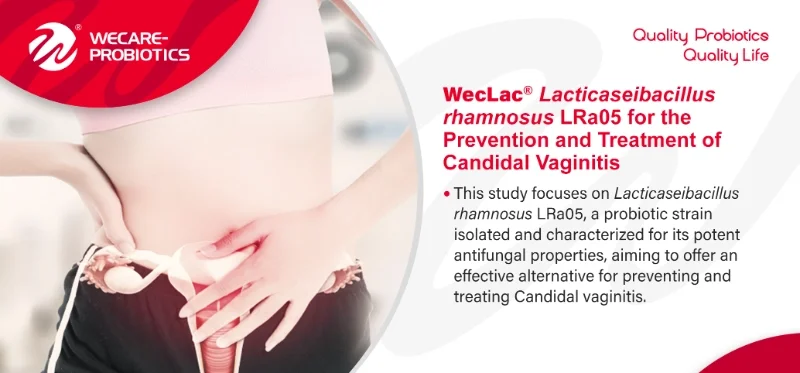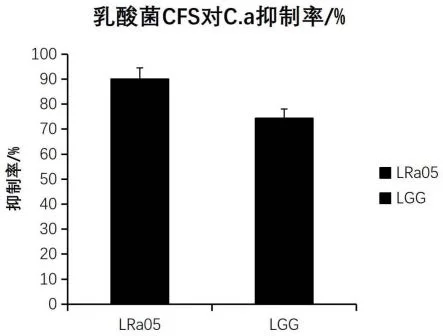Industry Insights
Home > News > Industry Insight > WecLac® Lacticaseibacillus rhamnosus LRa05 for the Prevention and Treatment of Candidal Vaginitis
WecLac® Lacticaseibacillus rhamnosus LRa05 for the Prevention and Treatment of Candidal Vaginitis

Abstract
This study explores the potential of Lacticaseibacillus rhamnosus LRa05 as a novel probiotic treatment for Candidal vaginitis. Isolated from fecal samples, LRa05 demonstrates superior antagonistic activity against Candida albicans, surpassing commercially available strains LGG, RC-14, and GR-1. Through in vitro and in vivo experiments, LRa05 significantly reduces Candida colonization and prevents recurrence, suggesting its promising application in clinical settings for managing fungal infections.

Introduction
Candidal vaginitis, predominantly caused by Candida albicans, poses a recurrent challenge due to its ability to disrupt vaginal microbiota. Current treatments, primarily antibiotic-based, often fail to prevent recurrence and may further imbalance the microbiome. This study focuses on Lacticaseibacillus rhamnosus LRa05, a probiotic strain isolated and characterized for its potent antifungal properties, aiming to offer an effective alternative for preventing and treating Candidal vaginitis.
Materials and Methods
Isolation and Characterization
Lacticaseibacillus rhamnosus LRa05 was isolated from fecal samples and stored under CGMCC No. 24377. Initial screening involved antagonistic assays against Candida albicans using the punch method, followed by co-culture assays to confirm antifungal efficacy.
In Vitro Antifungal Assays
LRa05 and other commercial strains (LGG, RC-14, GR-1) were evaluated for their ability to inhibit Candida growth. Cultures were incubated, and inhibitory zones were measured. The anti-biofilm activity was assessed using XTT reduction assays to quantify biofilm inhibition.
In Vivo Model
A murine model of Candidal vaginitis was established to test the therapeutic efficacy of LRa05. Mice were treated with LRa05, and vaginal samples were analyzed for Candida load reduction and symptom improvement over a 14-day period.
Results
Antifungal Activity
LRa05 demonstrated the largest inhibition zones (26 mm) compared to LGG (14 mm), RC-14 (18.5 mm), and GR-1 (18 mm). Co-culture results showed a 99.66% reduction in Candida load with LRa05, significantly higher than LGG (79.5%).
Biofilm Inhibition
LRa05's cell-free supernatant exhibited a 90.05% inhibition of Candida biofilm formation, compared to LGG's 74.38%, indicating a robust ability to disrupt established biofilms and prevent recurrence.
In Vivo Efficacy
Treatment with LRa05 significantly reduced Candida colonization in mice, with marked improvement in vaginal health and no observed recurrence post-treatment, highlighting its therapeutic potential.
Discussion
The study demonstrates that Lacticaseibacillus rhamnosus LRa05 effectively combats Candidal vaginitis by reducing fungal load and preventing biofilm formation. Its superior performance over commercial strains suggests its viability as a probiotic therapeutic agent, providing a natural and sustainable approach to managing recurrent infections.
Conclusion
Lacticaseibacillus rhamnosus LRa05 shows significant promise as a probiotic treatment for Candidal vaginitis, offering an effective alternative to traditional antibiotics. Further clinical trials are warranted to validate its efficacy and potential integration into therapeutic regimens.









 Leave a Message
Leave a Message Email
Email Linkedin
Linkedin